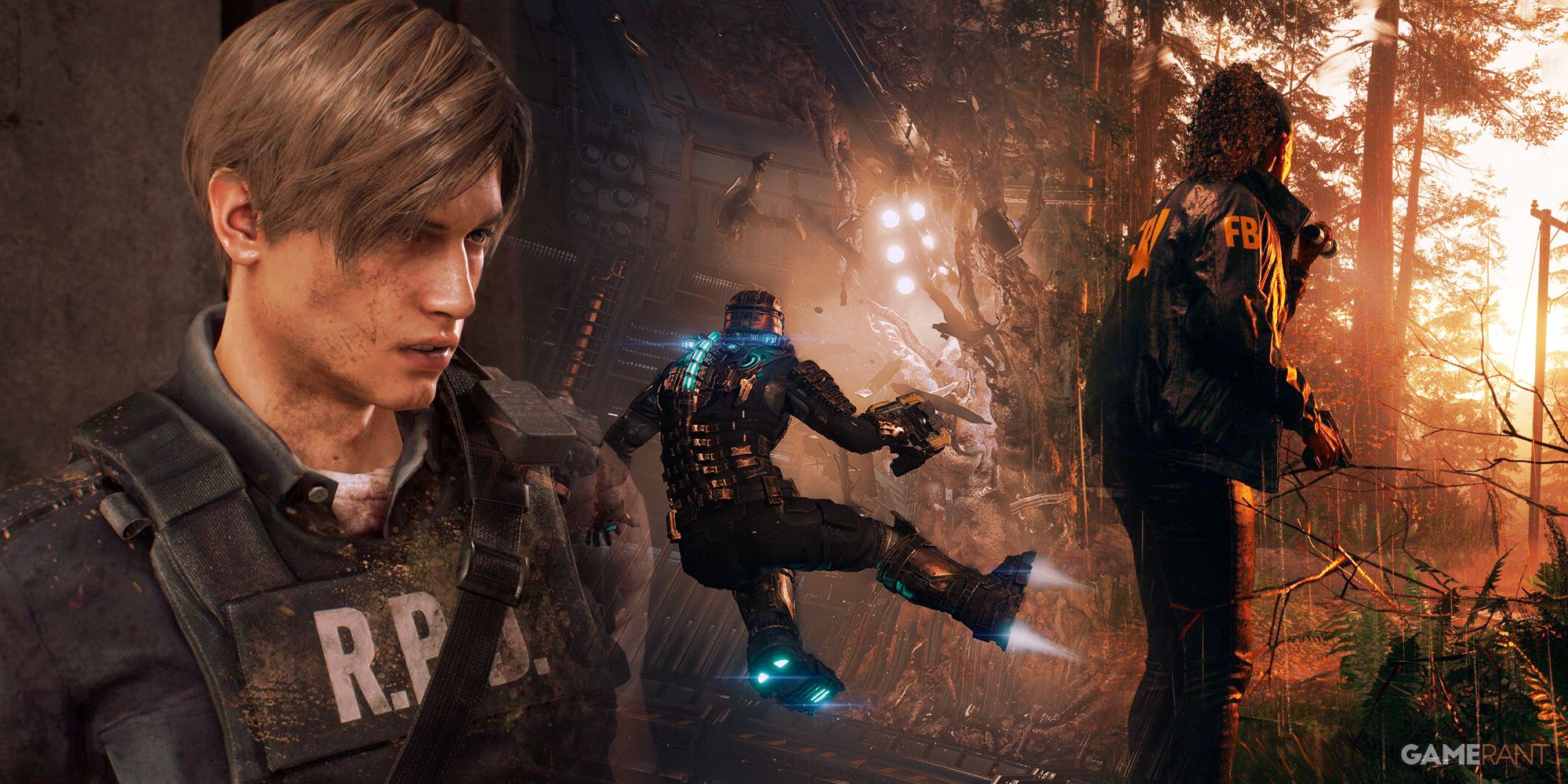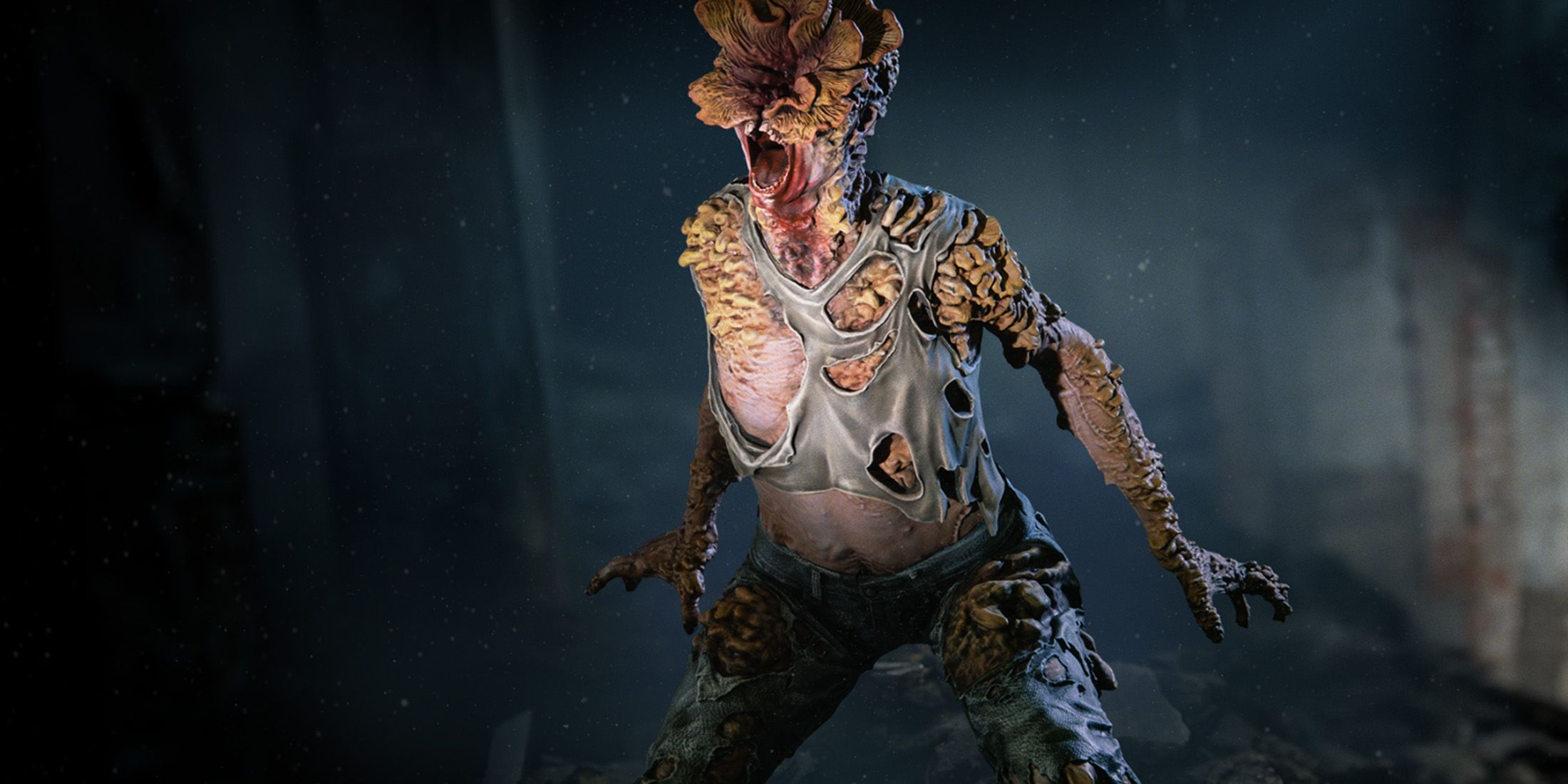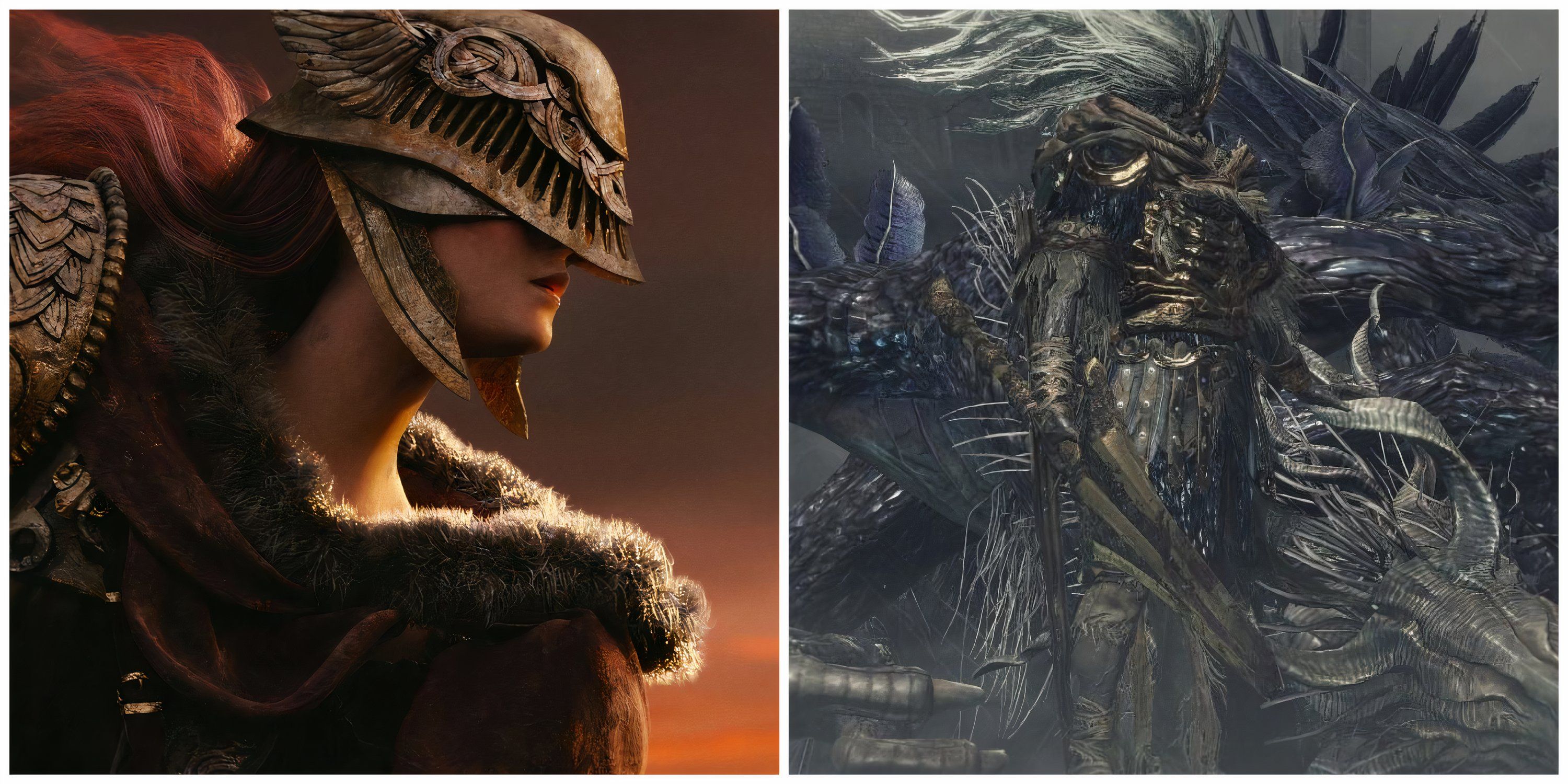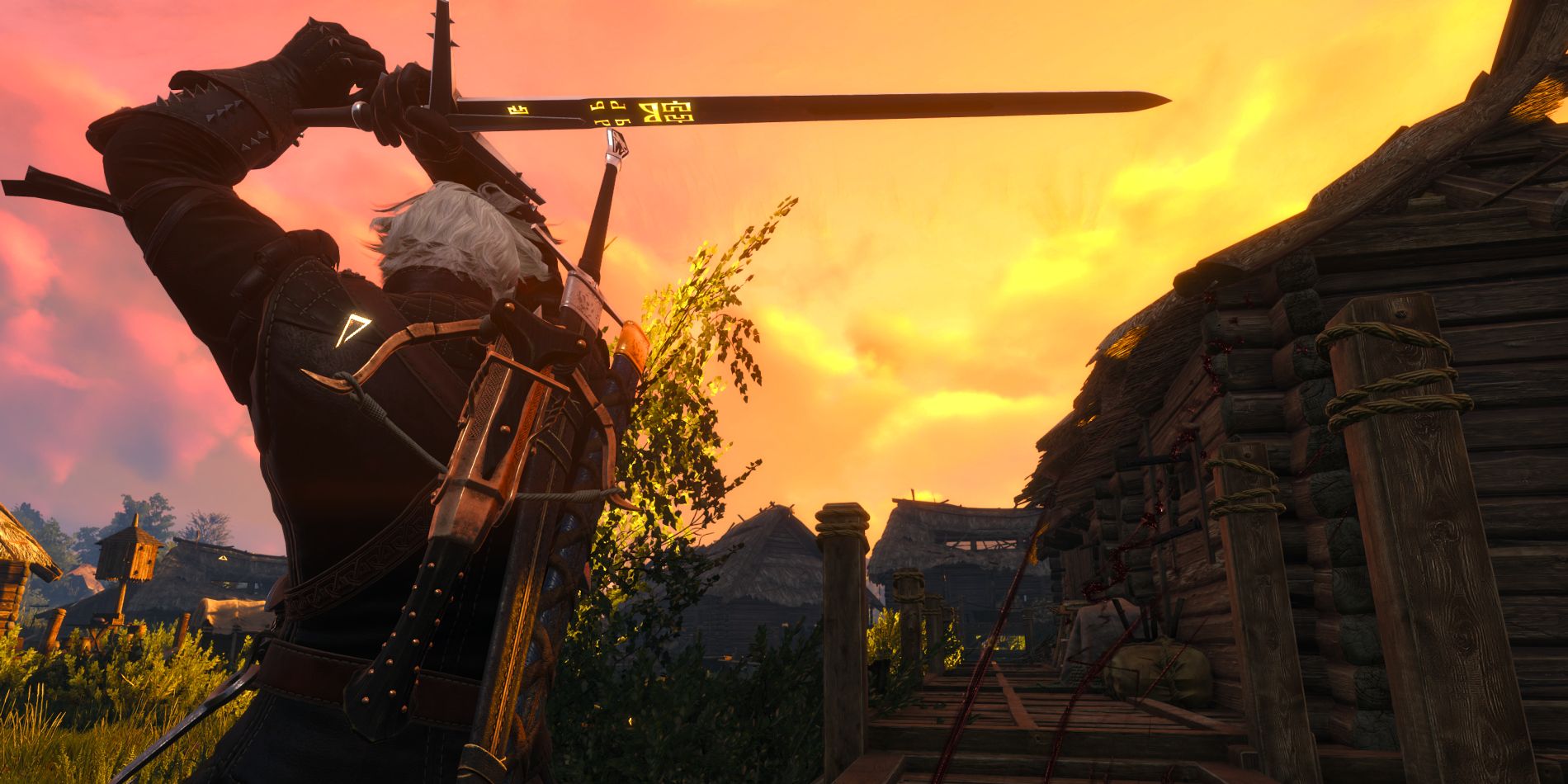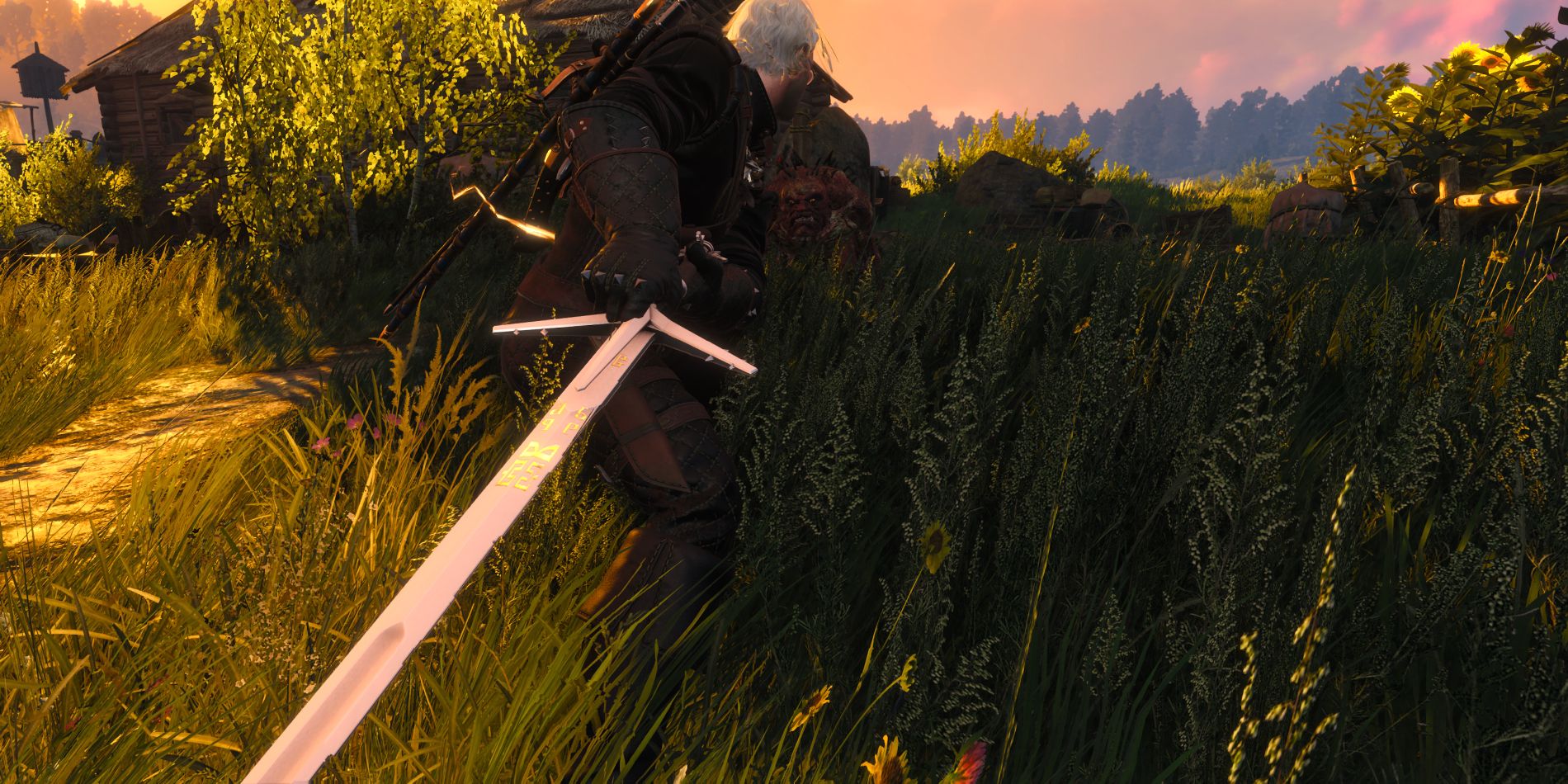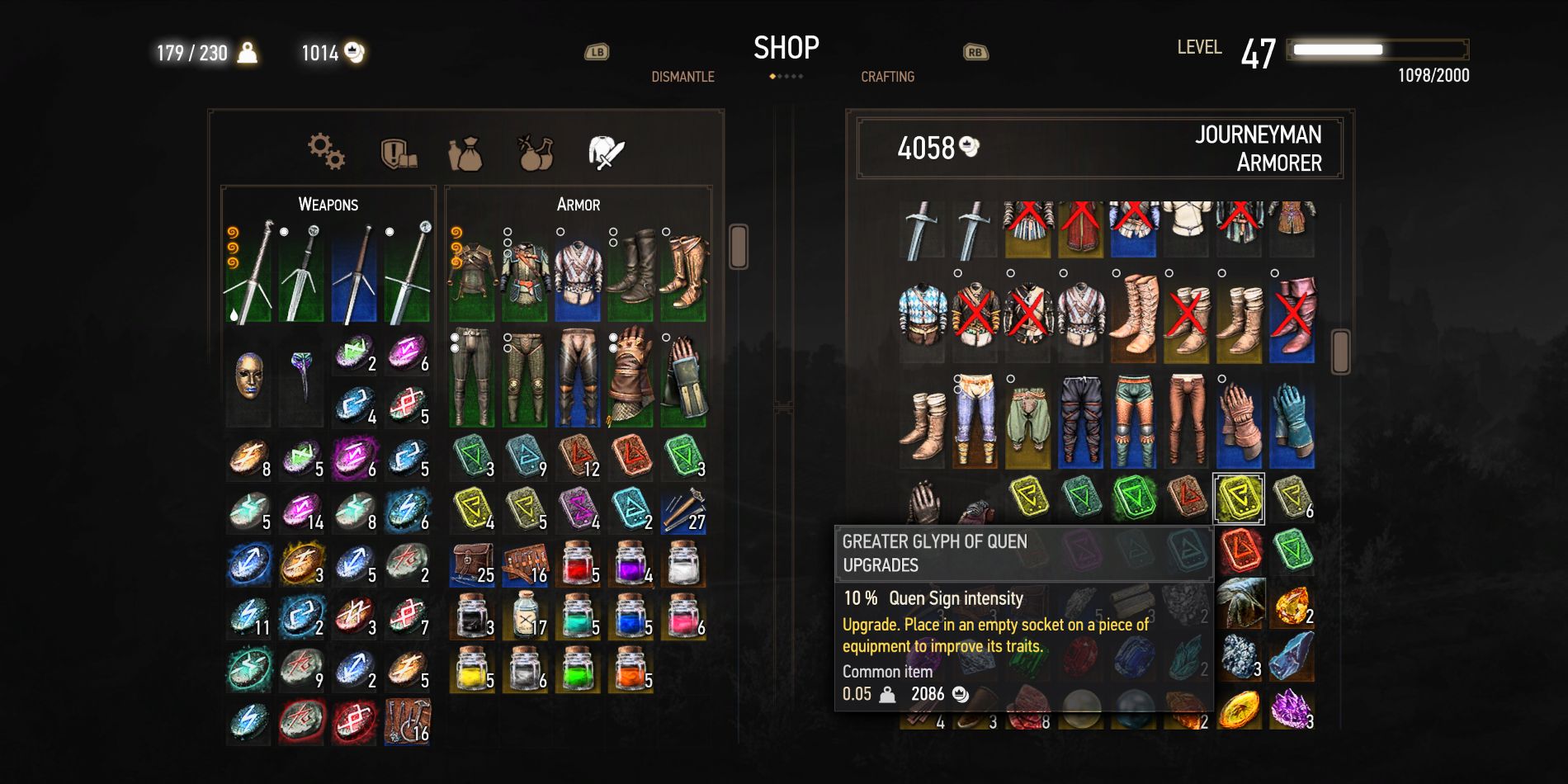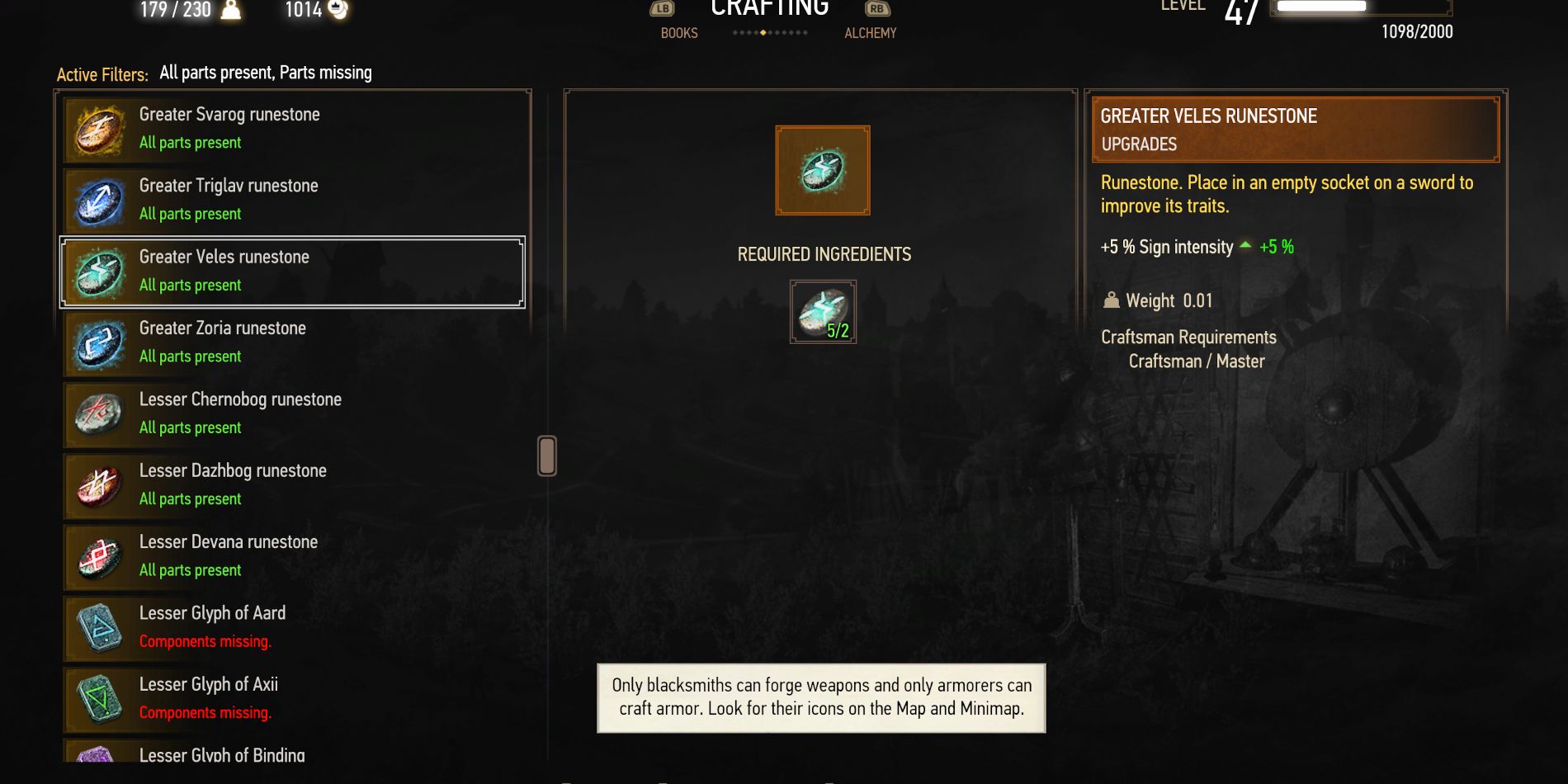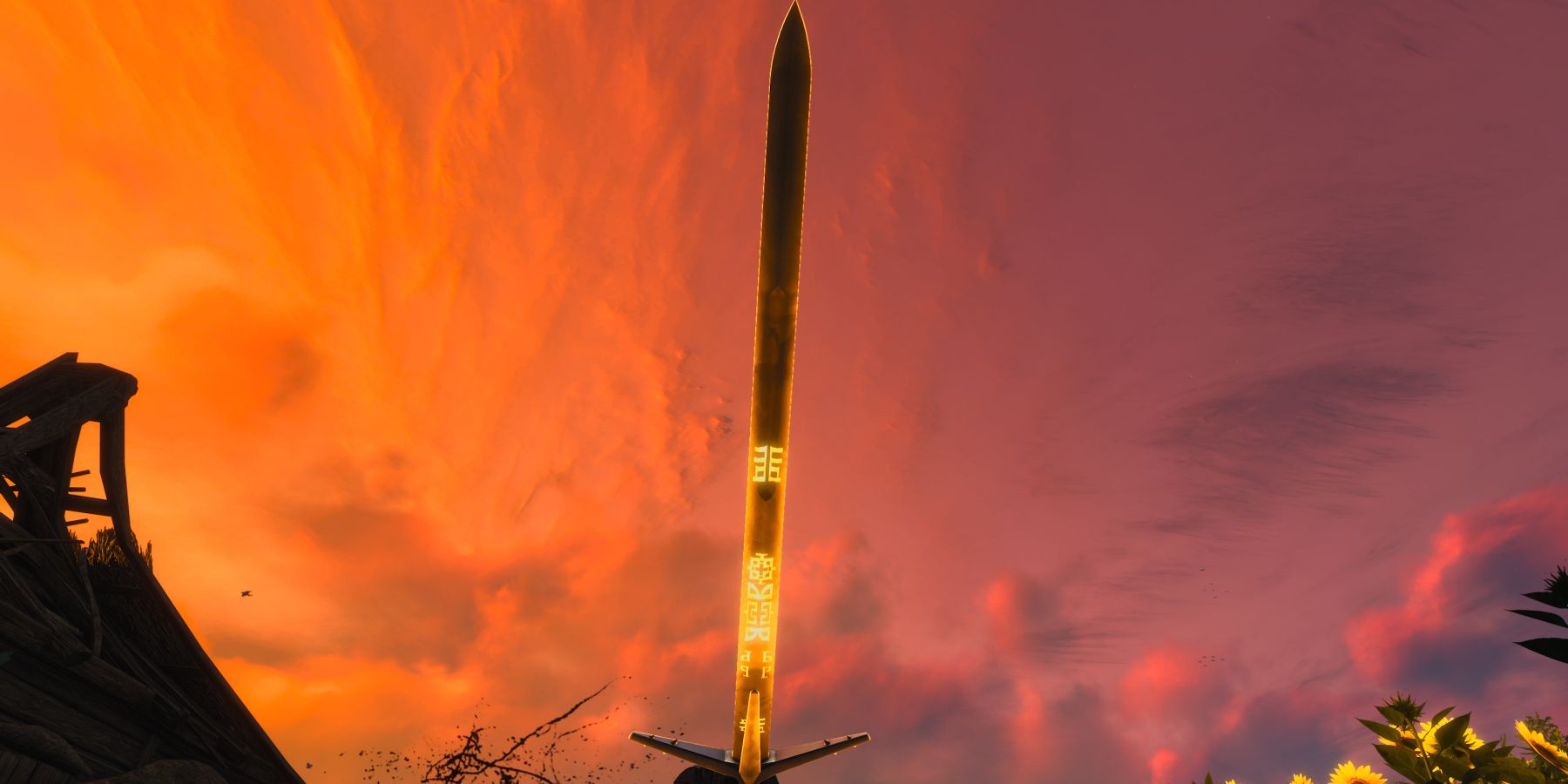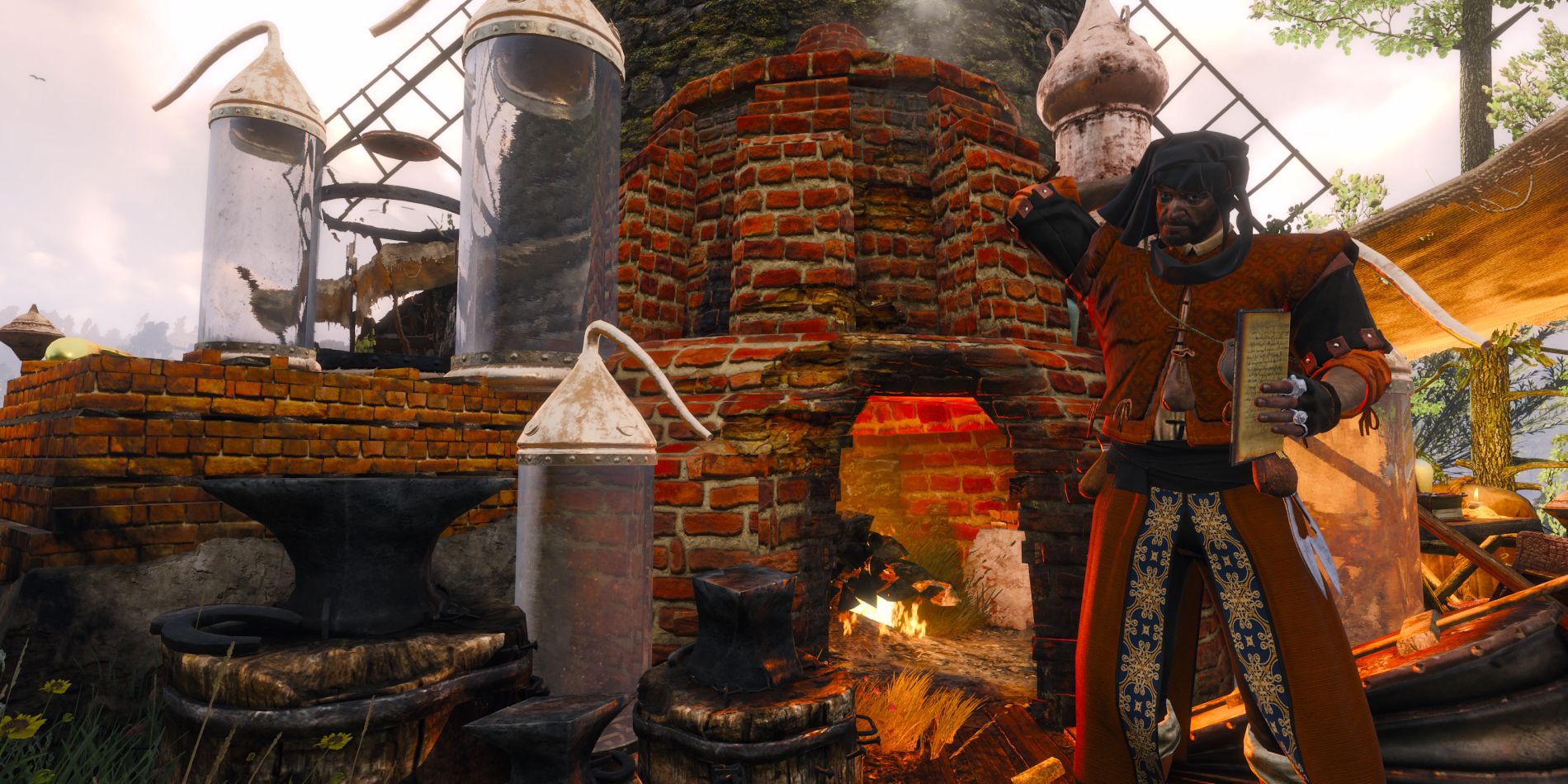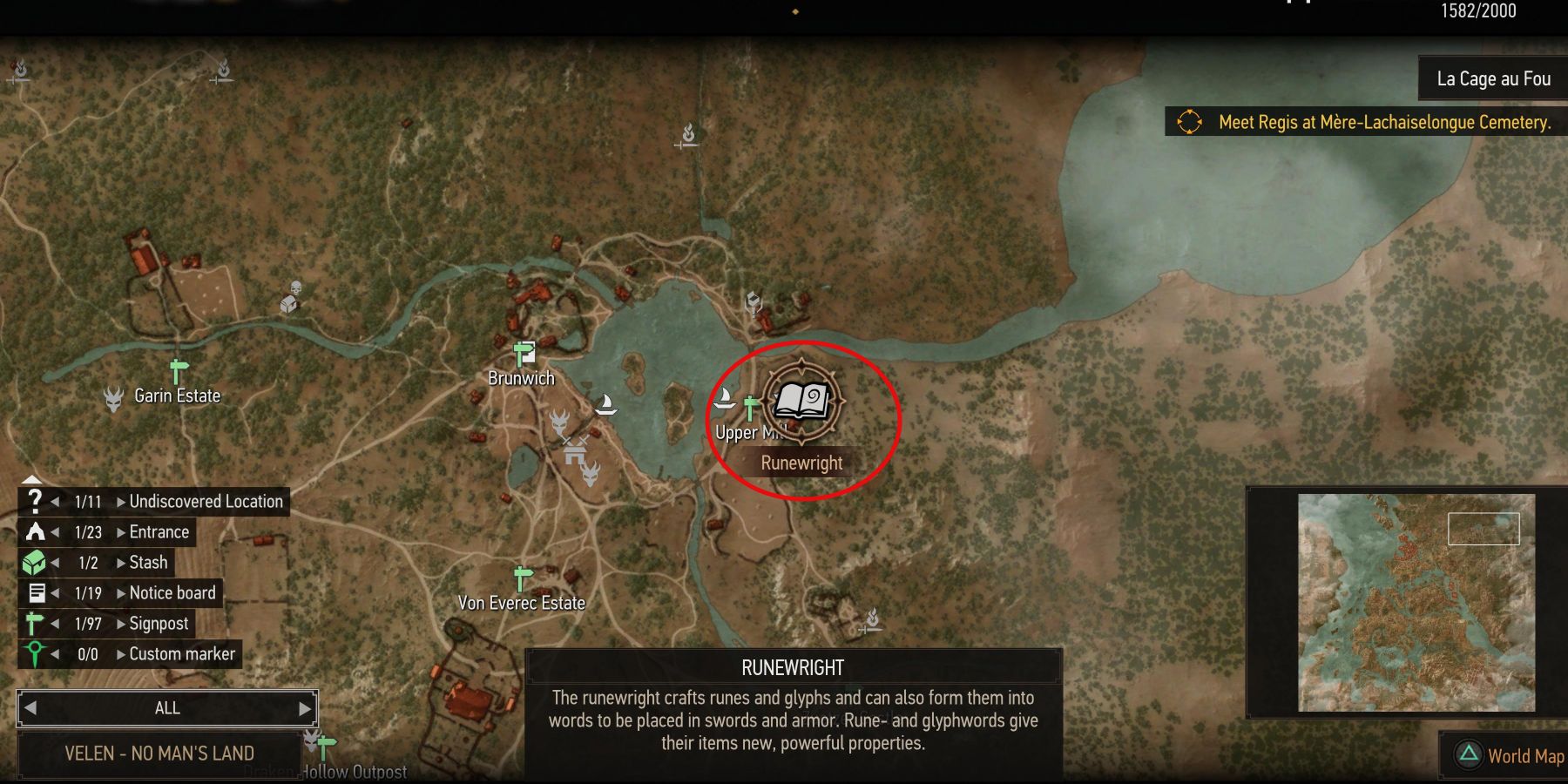Quick Links
The Witcher 3: Wild Hunt contains a massive amount of equipment for Geralt of Rivia to use and peruse throughout his long journey to find Ciri. With all the content found in the base game and its two expansions, there's little doubt that certain mechanics can be underused - or even missed entirely. Learning which systems benefit Geralt the most - and how to use them - will help make his time on the path vastly more enjoyable.
A perfect example of this concept in The Witcher 3 can be found in the runestone and glyph mechanic. While most players will likely use this system to some degree, fully utilizing it can turn what seems like small enhancements into an incredibly powerful set of tools.
What are Runestones and Glyphs in The Witcher 3?
Runestones and glyphs are both magical items that enhance the gear they are applied to. In the world of The Witcher, runestones are small stones that are applied to weapons, while glyphs are enchanted swaths of fabric applied to armor or clothing. Using these items can provide Geralt with a wide variety of enhancements.
Both runestones and glyphs can be found in three tiers:
- Lesser: As its name suggests, this is the lowest tier available. +2% to Effect
- Basic: The mid-tier, no addition to its title, i.e. Veles Runestone. +3% Effect
- Greater: The highest available tier. +5% to effect.
Where to Find Runestones and Glyphs in The Witcher 3
There are three ways to acquire runestones and glyphs in The Witcher 3:
Purchase:
Purchasing runestones and glyphs is a simple as locating a blacksmith or armorer and buying them. For the most part, other specialty merchants such as herbalists and innkeepers will not carry runestones, though that is not a hard at fast rule. Alchemy supply merchants sometimes carry them, but Geralt's best bet is going to a craftsman.
Exploration:
Geralt will often come across runestones and glyphs in his travels. As the story progresses, the quality of the enchantments will increase. Certain areas will have a higher likelihood of containing basic or greater runestones and glyphs. These include destroyed monster nests, guarded treasure chests, and treasure hunt quests. Thoroughly exploring any area Geralt enters will usually yield enchantments.
Crafting:
Crafting runestones and glyphs is the best way to acquire the exact items Geralt is looking for. Crafting requires several steps and will be detailed in the next section.
How to Craft Runestones and Glyps in The Witcher 3
Crafting enchantments in The Witcher 3 works much the same as crating weapons or armor. Before Geralt can ask a blacksmith or armorer to craft enchantments, he must first possess the proper crafting diagrams. Unlike weapons and armor, however, the diagrams cannot be found through exploration and must be purchased. Like the runestones and glyphs themselves, these diagrams can be purchased from merchants, though no one merchant holds every diagram.
Once Geralt possesses the diagram he needs, visiting the appropriate craftsman will allow him to acquire the item he seeks. After entering the crafting menu, look for the upgrade tab. This will show all the enchantments Geralt has available to him.
Crafting runestones and glyphs begins with the lesser variant. It takes two lesser to craft a single basic, and two basic to craft a single greater. This works across the board, no matter the variant. However, crafting the lesser versions requires a special 'blank slate' variant known as the lesser runestone in weapons and the lesser glyph of infusion in armor. Crafting these blank slate variants require:
Lesser Runestone | Black Pearl Dust, Infused Dust. Cost: 95 Crowns |
Lesser Glyph of Infusion | Silk, Powdered Pearl, Feather, Monster Blood. Cost: 99 Crowns |
An example of lesser runestone and glyph crafting requirements:
Lesser Striborg Runestone | Lesser Runestone, Amethyst Dust Cost: 155 |
Lesser Gyph of Aard | Lesser Glyph of Infusion, Sapphire Dust, Infused Dust Cost: 239 Crowns |
Striborg runestone will take two lesser striiborg runestones, Greater will take two striborg runestones.
While any blacksmith or armorer can craft runestones and glyphs, the tier must match. Lesser = Amateur, Basic = Journeyman, Greater = Master
How to Use Runestones and Glyphs in The Witcher 3
Runestones and Glyphs are applied to the open slots that appear to the left side of equipment images in the inventory menu. These slots do not appear on all items, though as Geralt progresses they will become more and more frequent. In the case of witcher gear, as the tier increases, so too does the amount of enchantment slots, ending on a maximum of three - the maximum across all items.
Getting the Most From Enchantments:
Generally speaking, any enchantment added to Geralt's gear can only help him. However, there are steps players can take to maximize their effect. With weapons, focus on the type of enemies each sword goes up against. For example, a stagger effect might be better used against human enemies, so a striborg runestone would be better suited for the steel sword. Several monsters are vulnerable to Igni, so applying the burning status to the silver sword through the dahzbog runestone could compliment that well. Adding passive upgrades like the veles runestone, which increases sign power by up to 5%, can be a good compliment to status effect like the dahzbog.
As the names of the glyphs would suggest, applying them to armor increases the corresponding sign. Adding them to all possible slots can greatly bolster particular play-styles. Defensive players can focus on Quen or Yrden, while offensive can focus on Igni and Aard.
Hearts of Stone Additions
The Hearts of Stone expansion made some big additions to the runestone and glyph mechanic. The biggest, runewords, allows a Runewight to use all three slots on an item to add a single powerful boon. These benefits can be extremely useful and are absolutely worth exploring. Along with runewords, several new runestones and glyphs are available. The merchant can be found once "Evil's Soft First Touches" becomes available.
He is located in the northwest section of the Novigrad/Velen map. Unfortunately, Geralt cannot just jump into using better gear. He must first provide a massive amount of coin on three occasions. Geralt must bring 5000 and a chunk of jade (found during a small quest for the Runewright), 10000, and 15000. Geralt does have access to each tier he has paid for while saving up for the next.
The Runewright is also capable of adding slots to gear with less than three, or some gear, such as the incredibly powerful Areondight, that does not have them at all. There are some pieces that do not work, but there does not seem to be any strict set of rules to determine this. If Geralt has a piece he'd like to enhance or enchant, simply bring it to the Runewright to find out if slots can be added.
If Geralt is unhappy with any of his weapon or armor upgrades, any armourer or blacksmith will remove them for a small fee.
With these systems, Geralt can add an immense amount of power to his already ample toolkit. Keep experimenting with all variants until the right fit is found!
The Witcher 3: Wild Hunt is available now for PS5, PS4, Xbox Series X/S, Xbox One, Switch and PC

